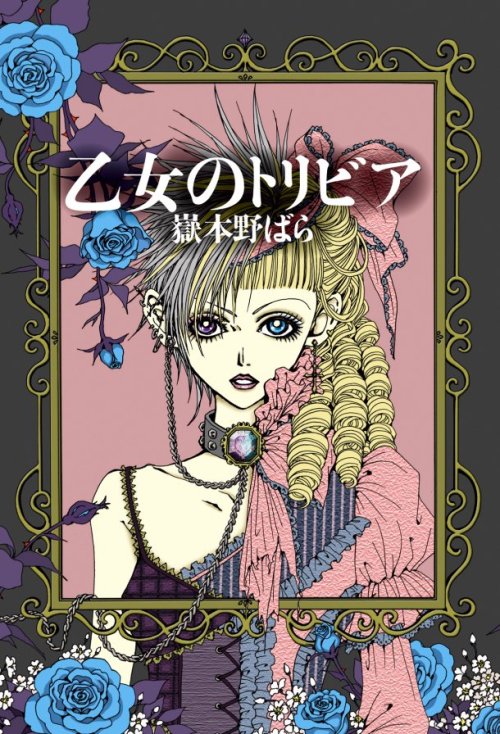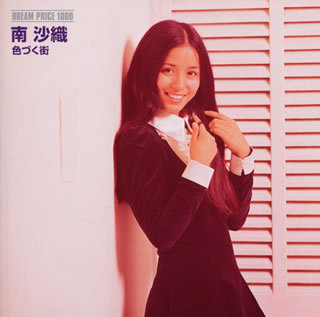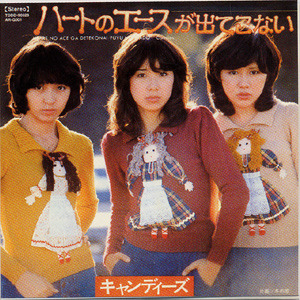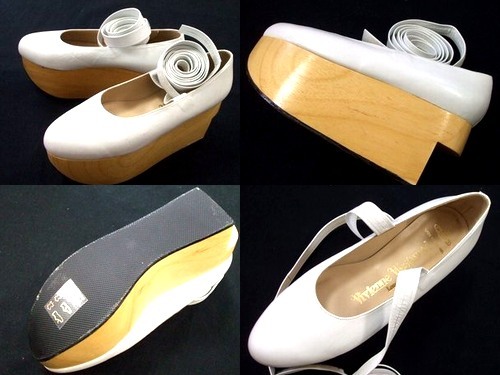I do not intend to write many opinion pieces on this blog, but perhaps once in a while I shall adventure into that territory. For now, here are some of my thoughts on lolita brands.
Please go and read Caro-chan's original post, "Making Lolita Brands More Accessible," before reading any further here!
Caro-chan writes of 4 main proposals she would have to improve brands, opening them up from a niche market and making them more accessible for "the typical Lolita". I quote from her original post and offer my own thoughts below.
・ Expand to the West.
First off, I believe they have done this remarkably well in the last few years. Most brands do ship overseas, and many have fluent, even native, English speakers working on this side of their business. It's still a new market that is in testing, so it's risky business for them, but they are doing very well. Keep in mind that the idea of not shipping abroad is not a lolita thing, but a Japanese thing in general - that's why things like J-List exist. Most shops will not ship overseas. It is very different from the way things are done in the US and Europe, etc, where most companies will ship anywhere provided you are willing to pay shipping. On this front, lolita brands are actually quite pioneering.
To respond further to this bullet point, Caro says:
It's no secret that Lolita isn't as big as it used to be in the early 2000's in Japan, the whole fashion seems to have migrated West. There are literally thousands of customers outside of Japan that many brands are cutting themselves off from by not, at the very least, offering overseas shipping.
I adamantly disagree with this statement. Lolita is not dying in Japan - on the contrary, it is increasingly popular. It has never been, nor will it ever be, mainstream. But it is not less prevalent than it has ever been. I cannot figure out where people keep getting this idea!
I agree that not offering overseas shipping does cut off international customers, but as I've already said, most do this.
・ Multiple sizes.
It is true that by offering larger sizes, they would probably get more customers. There is also, however, some worry by brands that offering larger sizes would alienate their main customer base, who would be afraid to be seen in something a "fatty-chan" could also buy, and it would lose exclusivity. Personally, I don't put too much stock in this concern, and I don't think it would actually be a problem, but it is true nonetheless that it is a prevalent worry in the minds of designers.
By the way, as an aside, I remember when I was taking an intro level economics class back in college, my professor telling us a story of a famous, highly-exclusive, highly-successful exercise clothing brand who offered only one size. It was an American brand, if I remember correctly. Despite offering only one size, in America no less, where sizes range much more than in Japan, it became one of the most sought after brands for exercise clothing. Why? Because if you could wear it, it meant you had the Perfect Figure. Girls would squeeze themselves in just to show off that logo that proclaimed "this is the ideal female figure". Now, is that ridiculous, silly, discriminatory? Sure! But it worked, and they had great economic success! Is this what the lolita brands are aiming for? I don't believe so. But I'm sure there's a tiny tinge of this kind of thinking somewhere in the back of someone's mind, and I can't blame them, particularly in the Japanese culture, which is quite different than ours on how they think of weight issues.
So it's not as simple as "more people who can wear the clothes == more people who will buy the clothes". They are concerned about losing current customers by reaching for these new customers.
But nonetheless, I do not believe this is the main reason why they do not offer larger sizes.
Why then? Because the customer base is simply Not There. Or at least they do not see that it is there. Perhaps it is, but they have not noticed yet. But in general, this again goes back to Caro's assumption that lolita is dying in Japan, and that only people abroad wear it anymore. (Okay, Caro never said only, of course, I am exaggerating. But nonetheless, she is coming at this from a viewpoint that lolita is growing abroad and shrinking in Japan, the latter of which I disagree with.) Most of the people who buy from the brands are still Japanese. When I say “most”, I mean a very very large “most”. It is still a Japanese fashion, and the brands cannot be blamed for targeting their Japanese customers as their main customers. And in this group, there are few who require anything larger than a size L. Do they exist? Sure! But they are rare…and while a Japanese girl may be willing to “forgive” a gaijin for being, well, “more to love”, she’s more likely to look down upon another Japanese girl for the same thing. And even the standard size 9, the standard M size, is rather larger than most average clothing you’ll find in a more mainstream boutique in Japan. It may seem small to us, but I could fit into lolita brand clothing easily while I could not walk into any mall and find clothing for work. On average, Japanese lolita brand clothing already runs larger than mainstream boutique clothing.
There is a sideline image (among all the negative images of cutting, self-mutilation, NEET, craziness, otakudom, social anxiety, social incompetence, and just plain bad fashion sense) that exists in mainstream Japan about lolitas, and it is that they are, well, pudgy. Your average lolita in Japan already may have a few pounds on her schoolmates. Not necessarily, to be sure! Lolitas do not like this image (unsurprisingly), so the idea of offering special larger sizes can be quite distasteful to many. So not only do brands not want the risk of making the larger (in their eyes, huge) sizes for the untested international market, but it’s also a risk they are taking domestically as well.
Those are just my thoughts on her "mystery". ;)
・ Friendlier customer service.
I agree with this one whole-heartedly. But I also would say they are working on improving. There can be horror stories told about any store, and in general the lolita brands do have amazing service, but they still do have room to improve. In their defense, I would say that stories like the one Caro linked (which is truly disturbing) are rare, but they should be nonexistent. I hope they will continue to improve. In IW’s defense in particular, they currently have a very lovely girl who is a native speaker (an American, and a friend) working on their international orders, so I am sure that this case would not happen again while she is there. I hope we do not see cases like this again in the future.
・ Lower priced items.
This one confuses me. They do offer inexpensive items. Maybe I haven’t looked recently, but if it is true that most don’t have totes, etc, I bet it’s just at the moment. Or maybe they’ve stopped offering them on the site, and just have them in stores lately? I’m not sure on this one. But you can buy hairbows, accessories, etc for $30 or so, so it’s not like there aren’t inexpensive items to be found. There are pouches, pen cases, and even Bunny Bear straps available on the Baby site for $20-30. And a pair of socks is always affordable and useful and so cute!
I think that the niche for cheapo items is taken up by lucky packs, which are being offered more and more frequently lately. Isn’t a full outfit, with a jumperskirt, blouse, bag, socks, and hairbow for $200 (or $250 or whatever) better than a tote bag for $20 or a tshirt for $40? I’m not sure people would be willing to pay the $15 shipping for a $20 tote bag anyway (at least I wouldn’t!).
Though I suppose it certainly wouldn’t hurt to offer these things, and perhaps people would buy them, and they are fun to have and also fun to give as gifts, so I won’t really disagree with you here. It’s just not a problem I’ve noticed.
I have now explained my thoughts on each of the four main points, but I have not touched the remainder of the post at all yet. I will leave much of it unsaid, as I think my thoughts are explained clearly enough with the above. But there is 1 more line I would like to address. I think the statement I take the most issue with is this one:
Someone really needs to send Mana a note letting him no that he's not actually Christian Dior, no matter how high he prices his clothes.
Why? He doesn’t have to be Christian Dior to have some personal values. There are not only 2 kinds of stores, Dior and Walmart. There are allowed to be, there should be, some in the middle. Some cute little boutiques that do things the way they want to, decide their own business plan, and follow their own hearts. Make their own unique designs and sell them in whatever sizes they want, regardless of whether they will be trendy or not. Regardless of whether someone wants to call them “elitist” or not. Maybe they are! Maybe we like them this way. ;) These are our lolita brands, and I wouldn’t change them for the world. ♥
 Below is an English translation of the fifth of 31 essays/short articles in Takemoto Novala's recently published 乙女のトリビア, or
Below is an English translation of the fifth of 31 essays/short articles in Takemoto Novala's recently published 乙女のトリビア, or 












